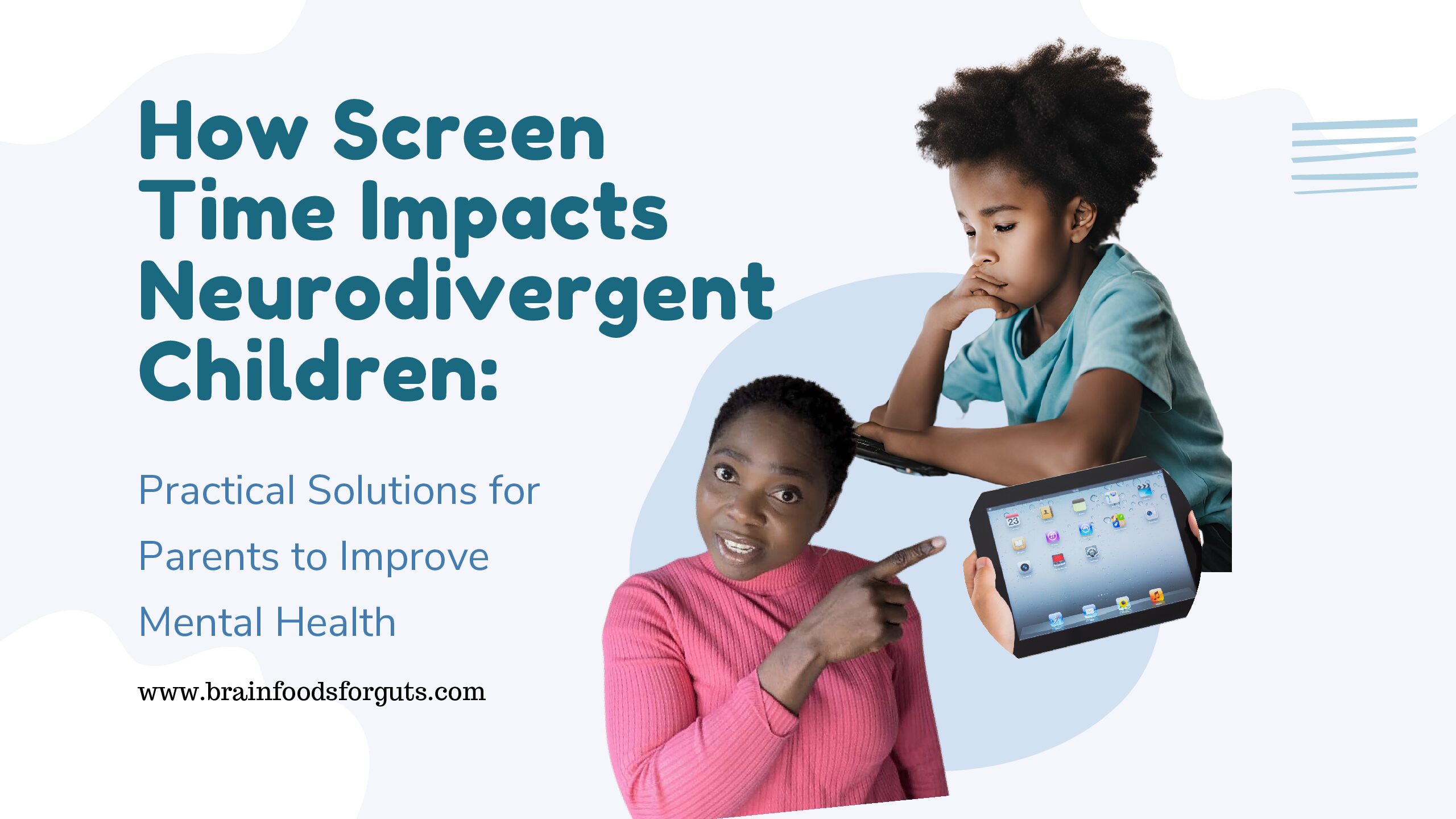Introduction:
Screen time and mental health in children have recently become a hot topic among health-conscious communities. In today’s digital age, screens are a part of our everyday lives. From schoolwork to entertainment, children spend more time on devices than ever before. But as a parent of a neurodivergent child—whether they have autism, ADHD, or other developmental differences—screen time and mental health in children are crucial, especially as this may impact your child’s behaviour, sleep, and mental health.
Screen time and mental health in children: How Is Screen Time Linked to Mental Health?
Studies show that excessive screen time, especially when not balanced with other activities, can contribute to various mental health symptoms in children. For screen and mental health for neurodivergent children, this connection can be even more pronounced. Screen time overuse is linked to:
- Increased anxiety: Prolonged screen exposure can overstimulate the brain, triggering anxiety and stress.
- Sleep disturbances: Blue light from screens interferes with melatonin production, making it harder for children to fall asleep.
- Behavioural challenges: Overuse can exacerbate hyperactivity, inattention, and irritability—especially for children with ADHD.
- Social withdrawal: Excessive screen time reduces face-to-face interaction, which is critical for children with social communication challenges, such as those with autism.
While screen time has undeniable downsides, it can be especially challenging for parents of neurodivergent children who may rely on assistive technology tied to screens for communication, learning, or therapy.
Why Neurodivergent Children May Be More Sensitive to Screen Time
Neurodivergent children may process sensory input, such as bright lights and rapid movements, differently than neurotypical children. Their sensitivity to stimuli makes them more vulnerable to overstimulation, which can worsen anxiety, hyperactivity, or irritability. For children with ADHD, screens provide constant dopamine stimulation, leading to addictive behaviour patterns, such as screen-related hyperfocus.
Children on the autism spectrum may also struggle with the transition from screen-based activities to real-world tasks, resulting in meltdowns or frustration.
Actionable Plans to Minimise Screen Time Without Disrupting Assistive Technologies
Reducing screen time without eliminating the benefits of assistive technology can be tricky. Here are some practical strategies that can help:
1. Create a Balanced Screen Time Schedule
Parents can establish a balanced screen time schedule that separates the essential use of assistive technology from recreational screen time. Focus on integrating non-screen-based activities that promote learning and relaxation, such as:
- Physical play: Engage your child in outdoor activities or sensory-friendly exercises to improve their mood and reduce anxiety.
- Creative outlets: Introduce art, music, or crafts that allow them to express themselves away from screens.
- Reading time: Explore books or audiobooks that cater to their interests and attention span.
Tip: Use a visual schedule or timer to help your child understand the balance between screen and non-screen activities. This can help set clear boundaries and ease transitions.
2. Optimise Screen Settings for Assistive Technologies
Since some neurodivergent children rely on screens for communication or learning, it’s essential to make screen time as low-impact as possible. Here’s how you can adjust settings:
- Use blue light filters: Install screen filters or enable “night mode” to reduce the impact of blue light on their sleep.
- Increase text size or contrast: Customising screen settings can reduce strain and overstimulation from visual input.
- Limit sound and brightness: Lower the screen brightness and reduce high-pitched or distracting sounds.
These adjustments make screen time less taxing on their sensory system.
3. Encourage Tech-Free Zones and Times
Designate specific areas in the house, like the bedroom or dining area, as tech-free zones to encourage non-digital interaction. Also, create “tech-free” times, such as during meals or before bed, to promote healthy screen habits.
Tip: Start small by implementing one screen-free hour each evening before bedtime. Use this time for calming activities like reading or puzzles.
4. Offer Engaging Alternatives to Screens
Children are naturally drawn to screens because they provide instant gratification. To counterbalance this, offer alternatives that are equally engaging. Here are a few ideas:
- Sensory toys: Introduce sensory-stimulating toys like fidget spinners, kinetic sand, or stress balls, which can offer a similar focus but without the screen.
- Nature activities: Organise regular nature walks or gardening to give them a calming sensory experience. A good jumping castle or trampoline can be good ways to get fresh air while engaging in fun activities outdoors.
- Social activities: Foster social skills by arranging small, structured playdates with neurotypical or neurodivergent peers. Face-to-face interaction can significantly improve mental health.
5. Monitor Content Closely
Not all screen time is created equal. While it’s difficult to completely eliminate screens, you can monitor and control the type of content your child consumes. Choose apps, games, or videos that promote learning, mindfulness, or relaxation.
Tip: Look for apps designed specifically for neurodivergent children, like speech therapy apps or calming games that encourage emotional regulation. Amazon has dedicated iPads that are specifically designed with educational materials for children only.
6. Implement Regular Digital Detoxes
Every few weeks, implement a “digital detox” where screen time is significantly reduced for a day or weekend. During these detoxes, introduce family-centered activities like board games, cooking together, or visiting a sensory-friendly park.
These detoxes can give your child’s brain a break and improve mood, focus, and sleep.
7. Lead by Example
In combating the screen time impact on mental health in children, especially those on the autism spectrum, it is noted that children often model the behaviours of their parents. As parents, demonstrate healthy screen habits by limiting your own screen time, especially during family activities. When your child sees you engaged in offline hobbies or reading a book, they may be more inclined to follow your lead.
8. Work with a Professional to reduce impact of screen time on mental health of children
If you’re finding it difficult to reduce screen time or manage the behavioural changes that come with it, consider seeking support from a behavioural therapist, occupational therapist, or paediatric nutritionist who specialises in neurodivergent children. They can provide strategies tailored to your child’s unique needs and help you strike the right balance.
Conclusion: Taking Control of Screen Time for Better Mental Health
As the parent of a neurodivergent child, you already have plenty on your plate. Managing screen time may seem overwhelming, especially when assistive technology is a vital part of your child’s life. But by making small adjustments, creating boundaries, and offering engaging alternatives, you can help your child find balance—and improve their mental health along the way.



